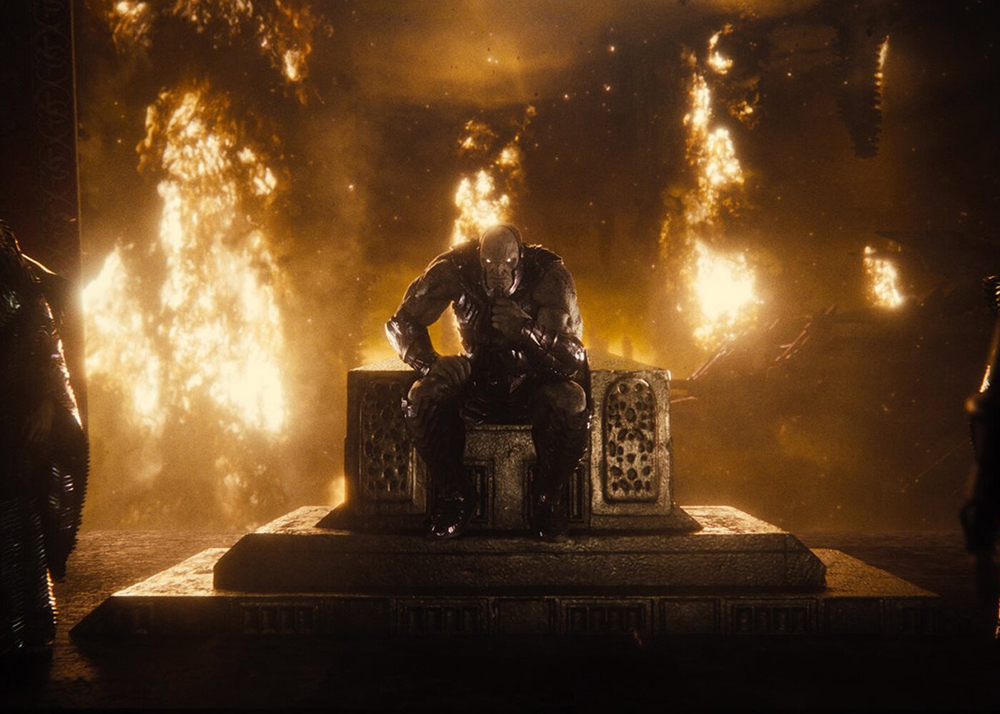“Zack Snyder’s Justice League” is a superhero film with a complicated backstory. Many know the story of how director Zack Snyder left the project in 2017 for personal reasons and was replaced with Joss Whedon, who rewrote much of the film and threw out a majority of Snyder’s footage. The troubled production of “Justice League” led to, well, a mess. But this version was Snyder’s opportunity to make things right and put his original, untampered vision to the screen. And it paid off better than any of us could have anticipated.
Zack Snyder is a visionary. His films are filled with flaws and decisions that many in Hollywood wouldn’t even consider. But, at the core of all of his films is heart and passion. This man operates on his own wavelength, and you can see the passion pulsating from every frame of this film. This is a slow-paced epic free of studio constraints. Snyder is in his element, crafting thrilling action sequences and powerful character moments. Since he had full creative control, every scene has time to breathe; from Wonder Woman saving the day at the bank to the story of the Mother Boxes shown through a thrilling battle sequence that feels inspired by “Lord of the Rings.”
Snyder’s color grading is much darker than the theatrical cut, matching his mature, serious tone. While Whedon’s film felt as if it was rushing to get from one plot point to the next, Snyder’s pacing is methodical, giving every character the depth they deserve.
Victor Stone/Cyborg, in particular, receives much more screen-time as we delve more into his backstory and his relationship with his father, Silas. The two are the movie’s heart and soul, and their relationship has a lot of drama and emotional weight that was merely touched upon in the original.

Cyborg shares a similar backstory with Barry Allen/The Flash, as they both have dead mothers and complex relationships with their fathers. They are fascinating to watch, and every performance in this movie is grounded and powerful. Steppenwolf is much more menacing in this rendition than in the original; his design is cooler, the CGI is impressive, and his dialogue is less cliché. His menace is illustrated in a thrilling sequence where he takes on a horde of Amazonian warriors to retrieve one of the Mother Boxes and comes out on top.
While this is a character-driven film with a lot of drama, it’s not free of levity. Ezra Miller provides excellent comic relief as The Flash, and the comedic moments are there without being too overbearing. Whedon’s “Justice League” was lighthearted and funny, but Snyder and writer Chris Terrio weave the comedy very well through the film’s dark tone. It’s vastly different from the botched theatrical cut, as the plot is fleshed out much more, and subplots are added with more characters. The dialogue is not overly quippy or funny but is instead serious and captivating. And by far, the highlight of the film is the finale.
The original “Justice League” featured a CGI-heavy final battle that looked like it was entirely made on computers, putting it on par with TV movie battles. However, this film’s finale is an infinite improvement over the original, taking away the distracting backdrop and presenting incredible action choreography. Gone are the qualities that made the original feel like disposable entertainment ; this finale is a cinematic achievement with crowd-pleasing moments. It is long and epic in every sense of the word, and it may very well take your breath away.
Unfortunately, like with all of Snyder’s films, there are many flaws that prevent the movie from reaching the masterpiece status it deserves. For example, there are moments of noticeable CGI, and the villain’s quest for power and world domination feels very familiar. Also, the marketing leading up to the film advertised Jared Leto’s return as the Joker; however, he has a mere cameo appearance in the film. Furthermore, there is a wonderful sequence near the end that ends with the perfect closing shot. But instead of ending there, the film keeps going for a somewhat unnecessary 15 minutes that feels very tacked on.
We also have the fact that this movie is 4 hours long. This behemoth of a run-time will not be for casual DC watchers and/or those with short attention spans; this is designed for the passionate fans who rallied for the release of the Snyder Cut since day one. Those without an appreciation for long movies and/or the DC Universe will likely be bored of the affair.
Because the film tends to spend time on each character and scene, there are long stretches of time without certain beloved characters due to the size of the ensemble that the movie constantly has to juggle. Also, Cyborg appears very early on in the film, and watching Snyder’s film, Joss Whedon’s reshot scene where his face is slowly built up and revealed may be the only minor improvement the previous director made. But, this film works. It is one singular vision brought masterfully to the screen. This is not a studio product flung into theaters to make money and sell toys; this is an impeccable achievement from a man who loves the DC Universe, and it is sure to please the fans who will have their years of support amount to a film they deserve.